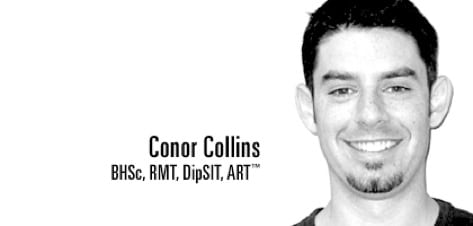![Foot_Injury_Exercises[1] Foot_Injury_Exercises[1]](https://kcdn-dfbd.kxcdn.com/wp-content/uploads/2011/10/Foot_Injury_Exercises1.jpg)
Excellent post for you on foot injury exercises.
How to effectively address issues in the foot through SMR, mobility, and stability
The foot is a complex structure for fitness and health professionals to assess effectively. Bearing weight for most of the day, it is responsible for absorbing and transmitting forces between a contact point (usually the ground) and the rest of the body.
The most commonly diagnosed condition in the foot is plantar fasciitis. While this may be common, many states may develop in the foot. Without a proper diagnosis, methods of rehabilitation become blind and often ineffective.
Below are some of the most common foot conditions to keep in mind during your assessment:
Plantar fasciitis:
Pain is present in the heel or underside of the arch. The pain usually decreases with rest and is worst during the first few steps after long rest periods (i.e., in the morning). Heels spurs, or bony growths, may also show up on an x-ray to help confirm this diagnosis. (For plantar fasciitis exercises, check out Rick’s Plantar Fasciitis Relief in 7 Days Program)
Severs Disease:
Heel pain that presents in children between 8-14. Pain is similar to plantar fasciitis; however, spur development is uncommon. This condition is caused by inflammation of the growth plate in the calcaneus (heel). Pain gets better with rest and is recreated by squeezing the heel.
Fractures:
Fractures can present with minimal or no swelling. Pain does not decrease with rest; the bone may be tender to the touch, and night pain may also be experienced. Stress fractures are pretty common in toes 2-5.
Neuromas:
A neuroma is a benign tumor originating from nerve cells due to regional irritation. Pain is relatively localized and is most common between the 2nd and 3rd toes. There may be a palpable nodule that is very tender to the touch.
Tendinopathies:
Any tendons that assist in stabilizing the arch can become irritated due to repetitive strain. Pain may be present at the start of the activity and disappear during and resume post activity. Pain presents as a dull ache and may extend up into the calf. (For Achilles Tendinitis exercises, check out Rick’s Achilles Tendinitis Exercise Solution)
Sprains:
Impact sprains may happen, especially on flat feet. Pain is sharp, tender to touch, and may be accompanied by localized swelling.
Peripheral Neuropathies:
Nerve entrapments higher up in the leg and back can cause pain in the foot, especially on the medial side (mimicking plantar fasciitis). Night pain may be present, and symptoms are paired with problems elsewhere in the body (i.e., “calf or hamstring tightness causes my heel to flare up”).
Degenerative Changes:
The most common arthritic development in the foot happens at the big toe. Pain is localized to the big toe and may be present at night. There may also be the presence of bony growth. Bunion formation can present similarly at this joint. However, bone growth happens on the inside of the big toe.
1. Simple Assessment Foot Injury Assessment
Assess the foot is non-weight bearing first. If a person has an arch while non-weight bearing, you should recognize the potential for that person to create an angle. This arch presentation should remain stable with optimal function upon the foot hitting the ground. Without forces of gravity and load, the foot is structurally sound.
When an arch collapses while non-weight bearing, the therapist/coach should consider how to improve arch stability. In my experience, a correctly administered rehabilitation protocol requires a lower orthotic prescription. Functional rehabilitation should still be provided, but symptoms may be addressed with an orthotic without expecting complete resolution.
2. Is Self Myofascial Release Good For The Foot?
Pes Planus: Most conditions happen because the foot is unable to be stable in a gait cycle. This loss of function leads to pronation of the foot or dropping of the arch (also known as pes planus). Pronation of the foot leads to lengthening of the tissues in the bottom of the foot. The result is pain and irritation due to loss of mechanics.
Addressing tight fibrotic musculature that maximizes the function of the pelvis will undoubtedly create better opportunities for a position in the foot. In these instances, self-myofascial release (SMR) creates less tissue stiffness and greater instability. In the forefoot and rearfoot pronation cases, a coach/therapist may better coach SMR of the hips and pelvic girdle.
Pes Cavus: In cases of foot pain with a supinated (or cavus) arch, SMR may be more indicated. With supination, the underside of the foot is short. Shortness paired with lack of mobility through the tarsal bones leads to incorrect force distribution. Instead of troops cascading through the foot, point loads hit hard. Force is then controlled through the soft tissue on the plantar surface of the foot, resulting in repetitive strain injuries. In cases where excessive load is placed through bones, stress reactions may occur, resulting in stress fractures.
3. Stability for a planus foot
The Spiral Line Stirrup: Through the work of Thomas Myers, we have discovered that fascial planes in the body can influence structures far from the site of dysfunction. As described by Myers, the spiral line creates a stirrup underneath the forefoot. If facilities along this line or in close relationship to this line lack function, the stirrup will be unable to hold a person’s weight, and the foot will collapse.
Creating a rehabilitation program incorporating dominant hip stability with sound core mechanics will allow for efficient proximal development of force to pull on the spiral stirrup. This will allow its most distal connection (between the tibialis anterior and peroneus longus) to lift the arch.
Before initiating any exercise, the client should be taught how to create stability in the foot. This can be done by first extending the toes while keeping the rest of the foot on the ground. With the toes extended, the foot will automatically create an arch. Holding this arch in place, the client is asked to lower the toes toward the floor slowly. This is a very effective tool for teaching correct foot mechanics in the very early stages of rehab.
As rehabilitation progresses, exercises that promote stiffness during standing of the entire leg, hips, and core musculature should be encouraged. These exercises include deadlifts, single-leg, and rear foot elevated split squats.
4. Mobility for a Cavus Foot
The bones of the foot and toes need to move in a cavus foot to redistribute forces and help create the elastic spring that allows a person to propel while running or jumping. For adequate management of these forces,, athletes must have exceptional mechanics of the ankle and 1st ray (the talus, navicular, 1st cuneiform, and 1st metatarsal).
The foot can be prepared by the athlete performing SMR on the underside of the foot for 2-3 minutes. Mobility-based exercises can follow high repetition (15-25 repetitions) for multiple sets (2-3). Have the athlete work on the elements of mobility that are the most challenging for them. Once the foot is mobilized, have the athlete perform integrative patterns to retrain the brain on how to use the new foot. Rehabilitation methods will vary amongst skill sets, but be sure to focus on some element of integrative movement suitable for your athlete’s needs.
5. Orthotics
If treatment and rehabilitation methods fail, a good quality pair of orthotics may help support structural dysfunctions and lead to full resolutions of symptoms. Addressing foot issues with orthotics as the sole or primary intervention is usually not suggested as many foot conditions are multi-factorial.
When choosing orthotics casting methods are far superior to force plate technology. Force plate technology, although fancy, creates a three-dimensional product from a two-dimensional image. Secondly, make sure the orthotic is custom to the individual’s weight. If you can collapse the orthotic arch with the weight of your thumb, chances are it is non-functional when a person stands on it. Lastly, a good orthotic must control the foot’s arch before it hits the ground. Quality orthosis should be complete contact, which means they should hold the hook at its maximal height in a gait cycle.
Conor Collins

In his clinical practice, Conor specializes in the treatment and rehabilitation of runners and triathletes. He has had the pleasure of working in various sporting realms, with athletes in both amateur and professional ranks.
Outside of his practice, Conor is an instructor in soft tissue and manual therapy. He also provides continuing education to numerous practitioners in a variety of disciplines.
Hey, I hope you enjoyed the post on foot injury exercises.
If you are looking for a simple step-by-step guide that will help you and your clients fix chronic painful areas and recover from injury, then check out the Trigger Point Solution 2.0 program here:
That is it for today we will see you soon.
Rick Kaselj, MS


